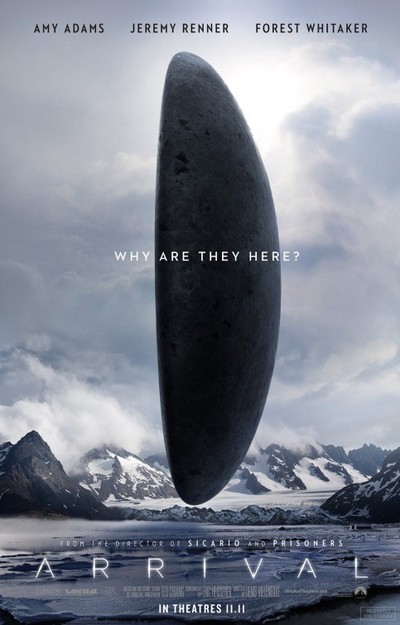|
‘Never explain anything; always imply everything.’ Mr Wootten, English teacher. Few lessons from school have stuck with me as profoundly as that single sentence spoken to me by my high school English teacher. Of course, being a cock-sure teenager at the time, I didn’t understand what he meant: surely as a storyteller your job is to build a coherent and fully functioning world, to populate it with perfectly imagined, three dimensional characters and to construct a watertight plot…? At least that's what I thought. And then I watched Stanley Kubrick’s ‘2001: A Space Odyssey’. When you’ve grown up watching ‘Buck Rogers in the 25st Century’ and ‘Star Trek’ on TV and being dazzled by Spielberg’s ‘Close Encounters of the Third Kind’ and Lucas’ ‘Star Wars’, the first time you watch ‘2001: A Space Odyssey’ – if you manage to make it through to the end – your initial response is ‘What the hell was that about!?’ From the opening Dawn of Man sequence with the arrival of the inert monolith, to the balletic movement of ships in space, the secrecy surrounding the discovery of an object on the moon, the trip to Jupiter and Hal’s malfunction, Bowman’s rapid ageing and finally the baby floating in space – on first viewing none of this made any sense to me at all. What was the monolith? Where had it come from? Who’d built it and what did it say to Star-watcher, the ape, that inspired him to pick up the bone and use it as a tool and then as a weapon? And the eerie sequence on the moon where another monolith is discovered – or is it the same one? And if it is, who buried it? – and suddenly it emits a high frequency radio signal aimed at Europa, one of Jupiter’s moons. What is it saying? Who is it talking to? And then there’s Hal, a 9000-series computer, machines that have never made a mistake, and yet he malfunctions, murders Poole and tries to kill Bowman. Why? And finally Bowman falls into the infinite – what the hell is that? – and watches himself age – is this really happening or is it in his head? And then he’s reborn - ? – as the Starchild - the next stage in humanity’s evolutionary journey? I’d never seen a film before that seemed to raise so many questions without giving an answer to any of them. ‘That’s the magic of this film, that nothing is tied up neatly…it’s what isn’t said and explained that is part of its mystery. And maybe Stanley didn’t know 100% himself.’ said Keir Dullea, who played Bowman, in the documentary ‘2001: Making of a Myth’. It seemed that ‘2001: A Space Odyssey’ was the very definition of what Mr Wootten had been trying to tell me. If you look hard enough you do start to find answers in the many makings of documentaries and the 1984 sequel ‘2010: The Year We Made Contact’: initially the monolith was going to have a screen on it which, presumably, would have shown Star-watcher what a tool was but Kubrick preferred it to be seamless; the monolith on the moon was an alarm system that would be triggered when humanity had advanced sufficiently to escape the Earth and was taken from Arthur C. Clarke’s short story ‘The Sentinel’; Hal malfunctioned because he knew Discovery’s mission but he had to pretend to the crew that he didn’t: he had to lie; and the original concept for the finale was that Bowman would meet the alien race that had created the monolith but Kubrick ran out of time and money so had to come up with something else. None of this is made explicit in the film and some are only partial answers. And the more you watch ‘2001: A Space Odyssey’ the more you realise that it is the holes, the mysteries, that keep drawing you back because maybe somewhere in the mesmerising visuals there is an answer. But then you remember Dullea’s words that even Kubrick wasn’t 100% sure himself. This idea that the storyteller doesn’t need to be 100% sure of her own story was echoed by screenwriter Eric Heisserer in an interview with Jeff Goldsmith. He explained that whilst adapting Ted Chaing’s short story ‘The Story of Your Life’ into ‘Arrival’ one of director Denis Villeneuve’s instructions was that there had to be a mystery in the story that not even they could explain: why twelve spaceships and why do they stop where they do? There are many films with compelling mysteries that latch into the viewer’s mind and just won’t let go: in ‘Close Encounters of the Third Kind’ why are the people who feel driven to find Devils Tower, Wyoming invited by the aliens? in ‘Alien’, who is the Space Jockey and what planet did he visit to harvest the xenomorph eggs? in ‘Memento’ who killed Leonard’s wife? in ‘Blade Runner’, is Deckard really a replicant? When an answer is given to these questions – as ‘2010: The Year We Made Contact’ and Ridley Scott’s alien prequels try to do – they are never satisfying because they set out to explain what was implied. And If you explain everything you lock the audience out of the story but if you imply everything you feed their imagination and the story becomes theirs.
1 Comment
|
ScriptPlayerWriter, reader, pontificator. Archives
May 2023
Categories |


 RSS Feed
RSS Feed